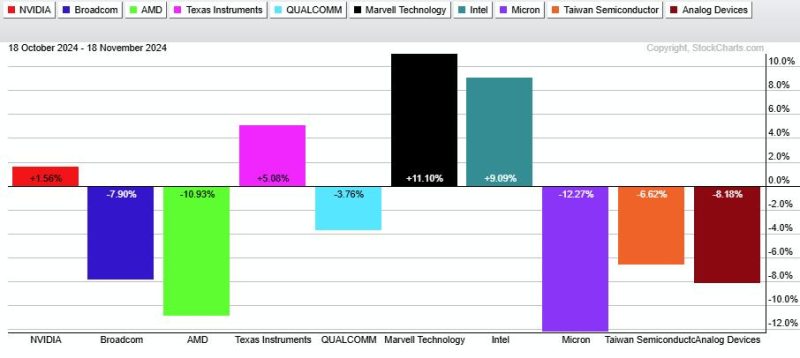In the world of exchange-traded funds (ETFs), the performance of semiconductor-focused funds has garnered significant attention due to the critical role that semiconductors play in various industries. Two popular semiconductor ETFs, the VanEck Vectors Semiconductor ETF (SMH) and the iShares PHLX Semiconductor ETF (SOXX), have seen contrasting performances as of late. Let’s delve deeper into the reasons behind why SMH is holding up better than SOXX.
One key factor contributing to the differential performance of SMH and SOXX is their respective holdings. SMH invests in a broader range of semiconductor-related companies, including those involved in the production of semiconductor equipment and materials. This diversification helps SMH mitigate risks associated with individual companies underperforming. On the other hand, SOXX has a more concentrated portfolio primarily focused on semiconductor manufacturers. This concentration can make SOXX more susceptible to the performance of specific companies within the semiconductor industry.
Another factor influencing the performance discrepancy between SMH and SOXX is their exposure to key market trends. SMH’s diversified portfolio includes companies that are benefitting from a range of trends such as the growth of cloud computing, artificial intelligence, and 5G technology. These companies are well-positioned to capitalize on the increasing demand for advanced semiconductor products. In contrast, SOXX’s concentration on semiconductor manufacturers may limit its exposure to other rapidly growing segments within the industry, potentially impacting its performance.
Moreover, the global supply chain disruptions and semiconductor shortages have further differentiated the performances of SMH and SOXX. SMH’s broader holdings allow it to navigate disruptions in the supply chain more effectively by spreading the risk across various companies operating in different segments of the semiconductor industry. SOXX, with its more focused portfolio, may be more vulnerable to supply chain disruptions affecting specific semiconductor manufacturers, potentially impacting its performance negatively.
Additionally, market sentiment and investor behavior play a crucial role in the performance of ETFs like SMH and SOXX. Sentiment shifts, macroeconomic factors, and geopolitical events can influence investors’ decisions and, in turn, impact the performance of these ETFs. SMH’s diversified portfolio may offer a more stable investment option during times of market volatility compared to the more concentrated holdings of SOXX.
In conclusion, while both SMH and SOXX are popular semiconductor ETFs, their differing performances can be attributed to factors such as portfolio composition, exposure to market trends, supply chain disruptions, and investor sentiment. Investors seeking exposure to the semiconductor industry should consider these factors carefully to make informed investment decisions based on their risk tolerance and investment objectives.
